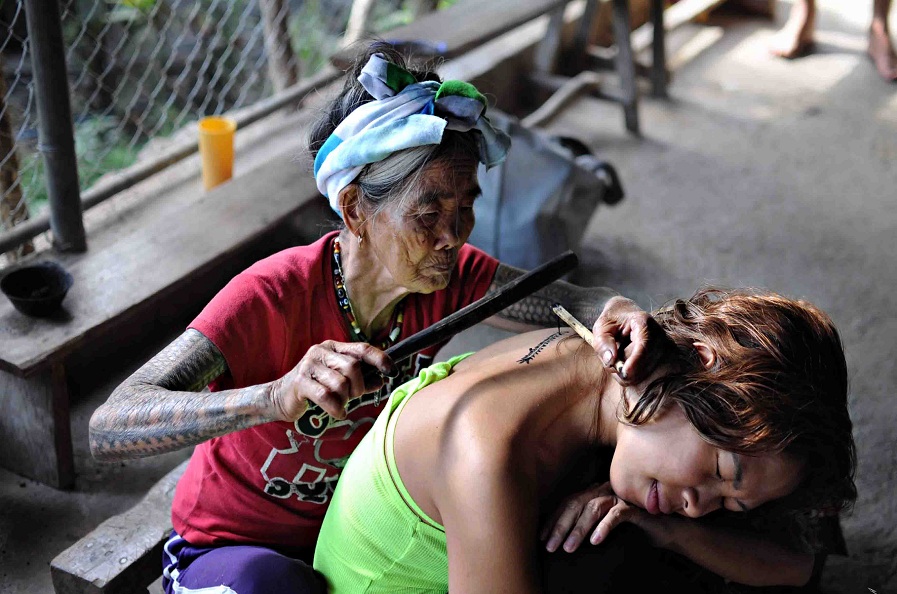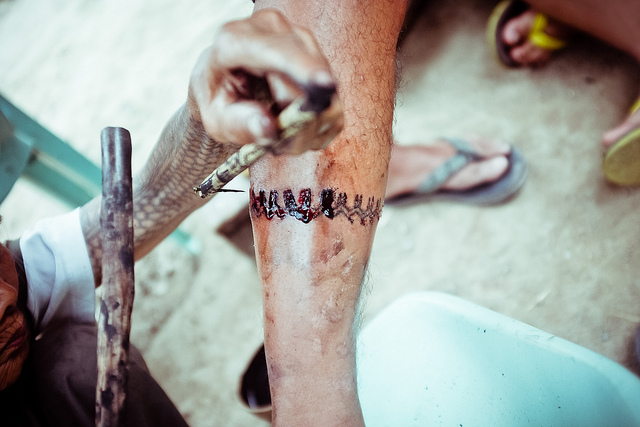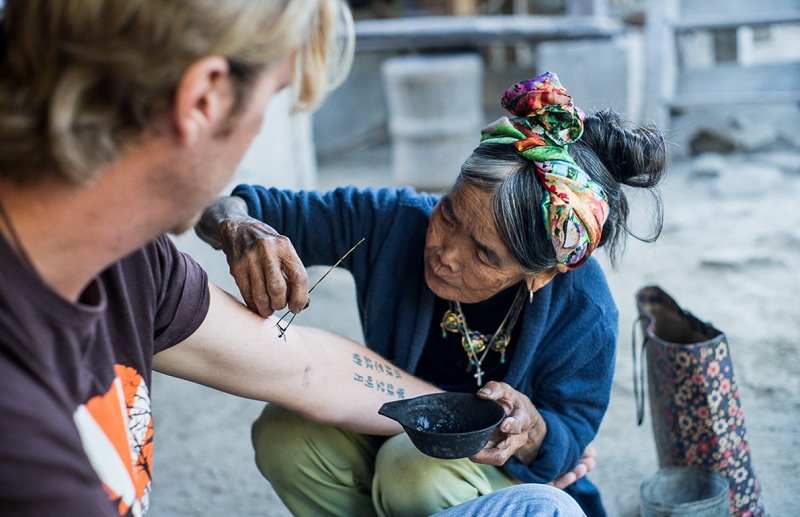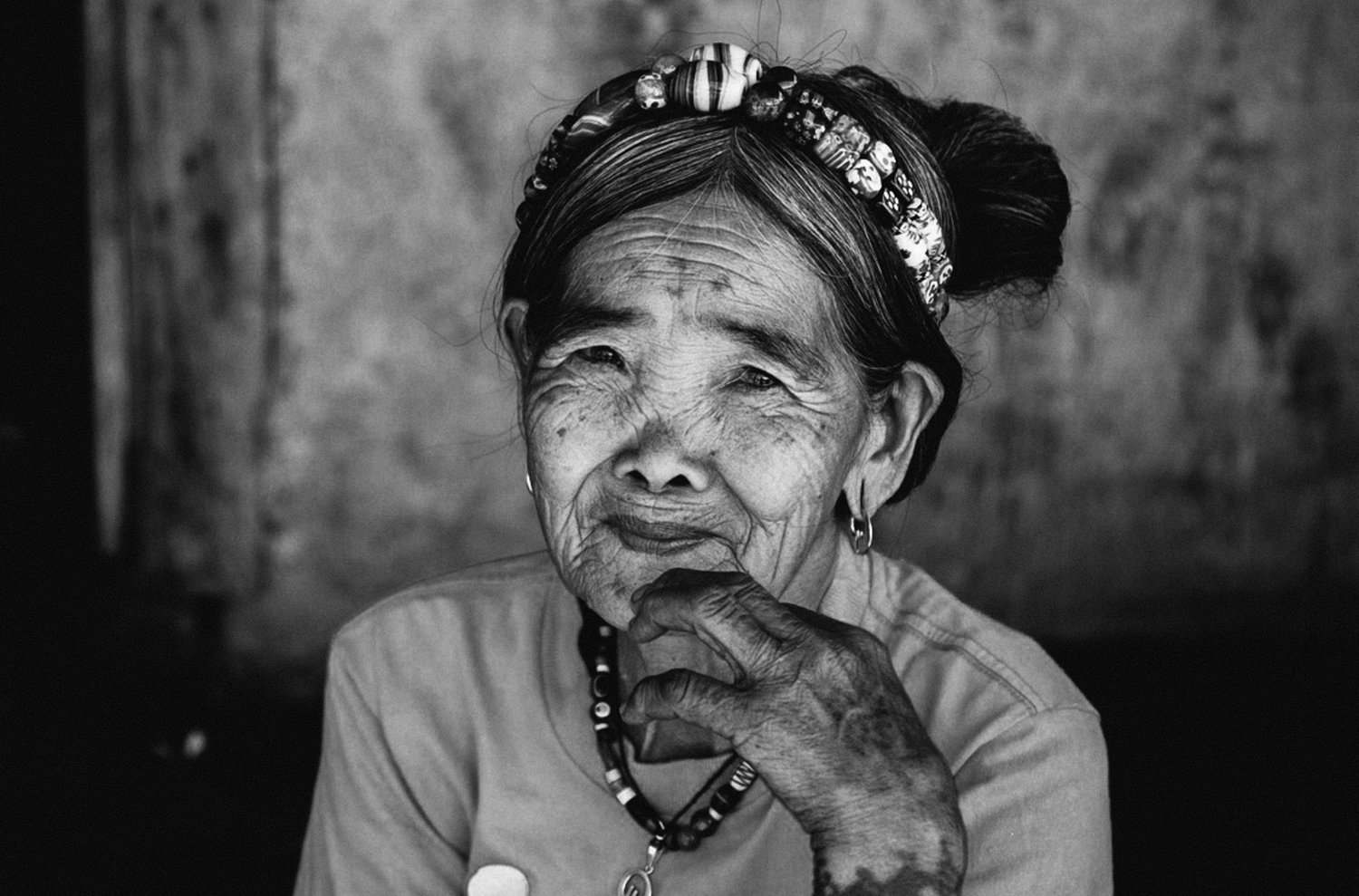“The tradition will continue as long as people come here to get tattooed. As long as I feel I am good at it, I will continue doing it. I will only stop when my eyesight gets worse,” Whang Od said.

Traditionally, arm tattoos were the hallmark of the Butbut indigenous warriors. They were eligible for a tattoo when they killed an enemy. For women, tattoos were seen as an aesthetic accessory. Whang Od recalls her teenage years when her friends covered their arms and legs with tattoos.

With the days of warriors gone, tattoos are for everyone. Now, Whang Od has a steady stream of international clients, carving about eight tattoos a day. Each symbol, from lines to circles to animals to tribal figures, has a deep meaning. Many represent natural elements like mountains and the sun, while others relate to fertility and strength.



Whang Od pursues a thousand-year-old technique, using only a few tools: pomelo thorns, a long bamboo stick, a jar of crushed charcoal, and water.
With absolute concentration, she paints her skin with homemade charcoal ink. With gentle pats, she uses grapefruit thorns and bamboo sticks to push the ink deeper into the skin. With this simple technique, Whang Od creates meaningful geometric patterns. And it is just as painful as modern tattooing.

Maintaining the art of tattooing is more complicated than it seems, it is only passed down through blood relations. Having no children, Whang Od has trained his two nieces, Elyang Wigan and Grace Palicas, for many years. “My fellow tattooists have all passed away. Now I am the only one doing this job, but I am not afraid of the tradition disappearing because I still have successors,” Whang Od said.
Mr. Whang Od also shared his secret to living to 100 years old is not eating canned food, greasy food or salted food, but only eating vegetables and beans.
Ngoc Anh (According to CnnTravel)


































